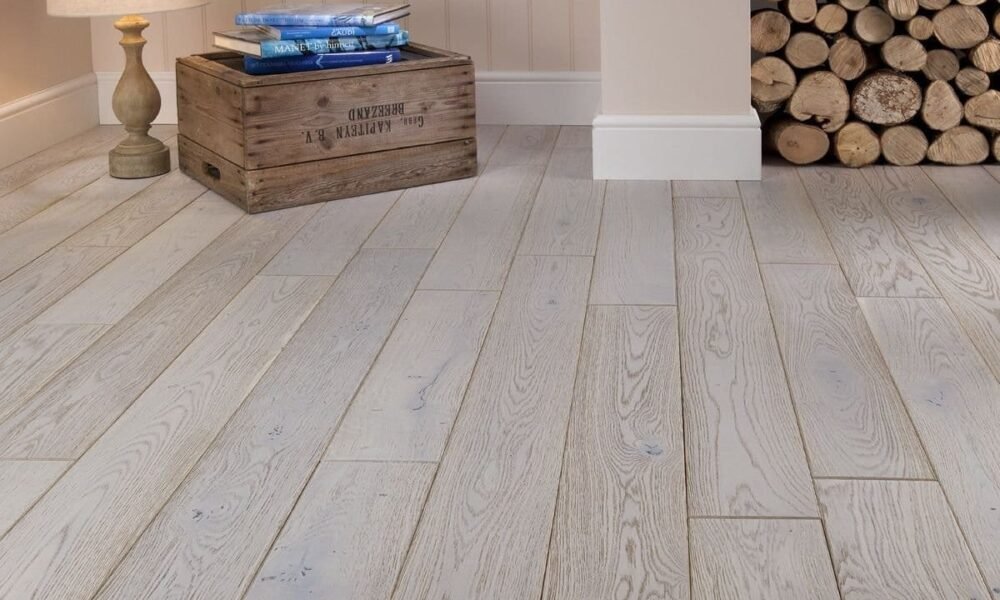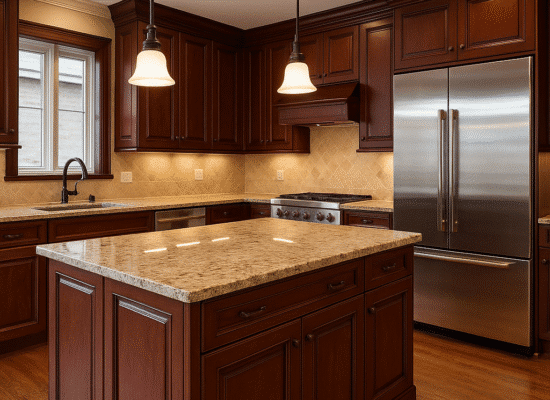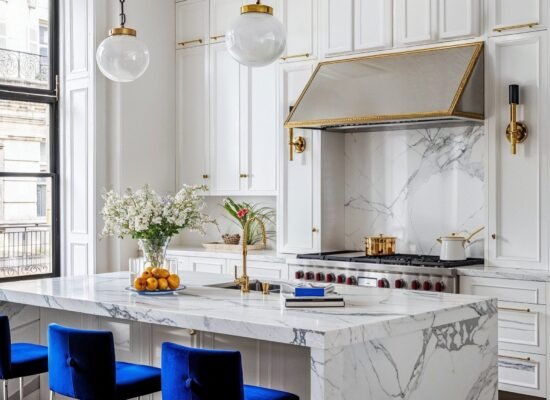Whether you are looking to revamp your existing flooring or build a new one from scratch – you may have heard the term ‘engineered wood flooring’ come up multiple times during your search.
Table Of Content
- Difference between a Solid Floor and Engineered Flooring
- Engineered Wood Flooring: Layers of Quality and Misconceptions
- Types of Engineered Wood Flooring
- Wood Ply Construction
- Finger Core Construction
- Fiberboard
- Hardwood Lamella
- Benefits of Adding Engineered Hardwood
- Same as Solid Hardwood Flooring
- Doesn’t Expand and Contract
- Durable
- Sanding Options
- You Can Refinish!
- Variety of Design
- Easy to Install
- Increase in Property Value
- Low-Cost Alternative
- Environmental Benefit of Engineered Wood
- Are There Any Drawbacks?
- Bottom Line
As one of the most innovative flooring forms, the wooden engineered floor has become one of the most preferred alternatives to solid wooden flooring. It is durable, just like actual wood, and costs less than many other options.
What else can you want, right?
In this guide, let’s take a detailed look at engineered flooring and what are the main advantages of using this type of substitute in your home and commercial projects.
So without further ado, let’s dive into our guide.
Difference between a Solid Floor and Engineered Flooring
The first question that comes to every potential buyer’s mind is engineered hardwood, and is it an alternative to authentic wood or a type of wood?
Well, engineered wood is not an alternative – it is, in fact, real wood – just a little different from solid hardwood.
While solid wood is made from a single ply, engineered wood is human-made and created from a combination of solid wood and a durable plywood core. Manufacturers glue and bond together multi-layers of materials to create the piece.
Engineered Wood Flooring: Layers of Quality and Misconceptions
Generally, the layers vary from three to ten, but typically 5 to 7 layers of material are ideal.
There is also a misconception that engineered wood is ‘fake wood flooring,’ which holds true in many cases. However, the best wood flooring manufacturers use high-quality materials and a sturdy core to ensure that the human-made option behaves similarly to the solid counterpart.
And once it’s installed, it’s impossible to distinguish one from a solid option. You can even use it to make creative wood floor patterns – similar to what you would make with solid wood.
Types of Engineered Wood Flooring
Engineered flooring is available in many varieties. However, there are four main types of wood that one can look out for.
Wood Ply Construction
Also known as multi-ply, the wood ply construction wood uses many thin layers of wood and bounds them with each ply running perpendicular to the ply underneath. In this method, the laborers apply equal pressure to all areas of the plies, ensuring its stability.
Finger Core Construction
This engineered wood floor is made up of small pieces of groundwood running perpendicular to the top layer of wood. The grains that run perpendicular to each other provide the wooden structure with stability while reducing wood expansion and contraction. As a result, this type of wood is free from gapping or cupping.
Fiberboard
Another type of engineered wood flooring is fiberboard. As the name implies, this type of flooring is characterized by high-density fiberboard at the center. Such flooring types absorb moisture from the air and should not be added to areas that get high humidity.
Otherwise, it would expand and undergo deformation – losing its visual appeal and functionality.
Hardwood Lamella
This type of wooden flooring is very popular, especially in European countries. It is acknowledged as the most stable engineered flooring as well and involves
Benefits of Adding Engineered Hardwood
Continuing on the subject, here are some of the main advantages of adding engineered flooring to your home and commercial property.
Same as Solid Hardwood Flooring
One of the most significant benefits of adding engineered wood is that its aesthetic appeal is the same as solid hardwood flooring. It looks just like real wood, and even the harshest critics would be skeptical into believing that the floor is or could be solid wood.
Doesn’t Expand and Contract
Another benefit you will find in engineered variety is that it doesn’t expand and contract like the reliable wood alternative. Thanks to its unique construction method, engineered wood is safe for all home areas – including the bathroom and kitchen, where moisture levels and temperature fluctuate significantly.
Durable
Like solid wood flooring, engineered wood is durable and able to withstand high foot traffic levels. This is because it is made according to a certain standard that ensures its durability.
Moreover, several layers of plywood are bonded together before being topped with an upper layer during creation. The making of engineered flooring enhances its toughness, making it a highly tempting option for long-term use in both – domestic and commercial settings.
Sanding Options
Despite the popular myth, engineered flooring can be sanded – and that too multiple times.
Yes, this is mainly dependent on the quality of the wood you are using, but the fact is that you can sand and re-sand the engineered variety during its lifetime.
However, it is essential to remember that you can wear away the flooring’s whole hardwood layer if you sand too much.
You Can Refinish!
Once re-sanded, you can also refinish the flooring to protect it and make it look brand new again. This gives you real flexibility as you can also stain the current flooring to a newer coloring and have it glazed for a changed effect.
Variety of Design
Similarities don’t end when you compare solid hardwood flooring vs. engineered wood. Just like wood, engineered flooring is available in a variety of species, grades, and finishes giving you the options to achieve any look.
Moreover, it’s available in different wood grades that vary in thickness, width, and species. This means you can choose the best option that suits not only your ideal design but also your budget appropriately.Easy to Clean
Let’s face it! Accidents happen in every home, and how hard you try, you can’t stop kids from spilling juice or muddy footprints from accumulating. But unlike carpet, regular cleaning of engineered flooring is pretty straightforward. Dust with a broom and wipe with a damp cloth for the ultimate sheen.
Easy to Install
Easy to work with, engineered wood floors provide a credible solution to DIYers and professional installers. There are even some wood boards with a click system, which means that anyone without proper experience can install wooden flooring in their home without professional assistance.
Increase in Property Value
Engineered wood variety adds an attractive element to residential and commercial properties too. This is because buyers tend to pay a higher amount for properties with proper flooring installed. So if you are looking for a long-term flooring option that adds actual value to the overall property value, wooden flooring is an ideal choice.
Low-Cost Alternative
Finally, engineered wood options will not break the bank as a solid wood flooring would do. The great thing is that from an outsider’s point of view, the engineered flooring looks like it costs a fortune.
However, in reality, – it won’t!
Environmental Benefit of Engineered Wood
Besides the above-mentioned simple advantages, engineered wood is environmentally friendly than any other flooring option for many reasons.
Firstly, during the making, the veneer is sliced rather than cut with a saw. This ensures that no sawdust is produced and all of the tree’s wood can be used to make the flooring. The sawdust produced during solid hardwood floors is usually wasted material – and can accumulate up to an extraordinary amount.
Additionally, the trees used for making solid hardwood floors grow much slower than those that go in the making of engineered products. This is because more surface area is required to produce the veneer.
Also, installing solid wood flooring uses many times the amount of a slow-growing tree. This makes the tree’s replenishing time much longer.
Are There Any Drawbacks?
While there are many advantages of using engineered wood flooring in your domestic and commercial project, engineered flooring is not foolproof. There are some drawbacks of this specific flooring type – just like any other option.
Compared to solid hardwood in terms of cost, engineered flooring is still considered more expensive than other flooring options such as carpet, laminate, and tiles. This is the biggest concern most people face when shifting from traditional flooring options to engineered ones.
If you use too thin veneers, it will prevent sanding and refinishing your flooring opportunities. Here it should be noted that sanding and refinishing can enhance your floor’s lifetime and are a necessary element when using such flooring types.
Moreover, a thin veneer or improperly produced can prematurely warp or fade the floor, and thus, you must choose your manufacturer comprehensively.
Similarly, some manufacturers try to cut corners using fiberboards instead of using core layers from high-quality wooden material. This compromises the stability of the floor, which may impact its lifespan and durability for the owner.
Bottom Line
Here we have discussed all the engineered wood pros and cons to help you decide on your property.
Over the years, engineered wood has swiftly emerged as the primary choice for flooring in homes and commercial buildings. If you are also considering the same, rest assured that you will be satisfied with the longevity and the aesthetic appeal of the flooring – just like original hardwood.
Just look into the manufacturer’s reliability and the quality of the wood they use to ensure you invest in the right material. Otherwise, you will risk losing the investment you made on a non-reliable flooring that would bring you more trouble than benefits.













No Comment! Be the first one.